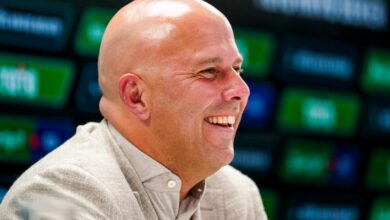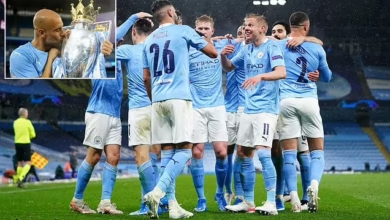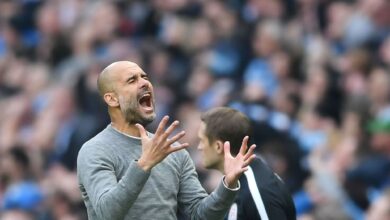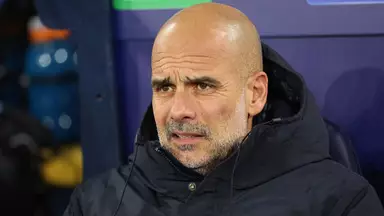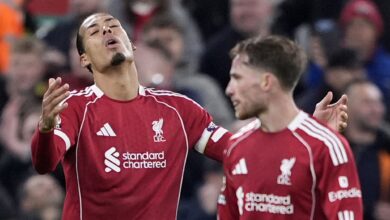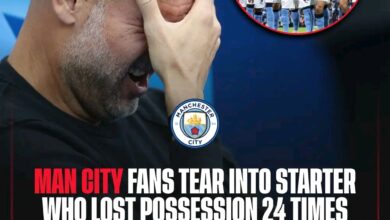Thomas Partey’s Arsenal Departure: The End of an Era at the Emirate

The football world is buzzing with confirmation of what many Arsenal supporters have long suspected: Thomas Partey’s time at the Emirates Stadium is drawing to a close. The Ghanaian midfielder, who arrived with such fanfare and promise in October 2020, is set to leave Arsenal when his contract expires in June, marking the end of a chapter that promised so much but ultimately delivered mixed results.
Mikel Arteta’s apparent reluctance to extend Partey’s stay represents a significant shift in Arsenal’s midfield planning and philosophy. The Spanish manager, who once viewed the 31-year-old as a crucial component of his tactical system, has evidently decided that the club’s future lies elsewhere. This decision, while perhaps inevitable given the circumstances, signals a major transition period for the Gunners as they prepare to reshape their squad for the challenges ahead.
When Arsenal triggered Partey’s €50 million release clause at Atletico Madrid on transfer deadline day in October 2020, expectations were sky-high. The Ghanaian international was seen as the missing piece in Arsenal’s midfield puzzle, a player capable of providing the defensive solidity and creative spark that had been lacking since the departure of legendary figures like Patrick Vieira and Gilberto Silva.
Partey’s reputation preceded him. At Atletico Madrid, he had established himself as one of Europe’s most complete midfielders under Diego Simeone’s tutelage. His ability to break up play, distribute the ball with precision, and contribute defensively made him an ideal fit for Simeone’s tactically disciplined system. The Spanish club’s success in La Liga and their consistent Champions League campaigns owed much to Partey’s contributions in the heart of their midfield.
Arsenal supporters were understandably excited about the prospect of Partey bringing that same level of performance to North London. The club had been crying out for a midfielder who could provide stability and leadership, someone who could anchor the team’s play and allow the more creative players to flourish. On paper, Partey appeared to be exactly what Arsenal needed to bridge the gap between their ambitious aspirations and their on-field reality.
However, Partey’s Arsenal career has been characterized by frustrating inconsistency and persistent injury problems. While he has undoubtedly shown flashes of his undeniable quality, these moments of brilliance have been too infrequent to justify the significant investment made in securing his services.
The injury concerns have been particularly troubling. Partey has struggled with various muscular problems throughout his time at Arsenal, limiting his availability and preventing him from establishing the kind of consistent rhythm that made him so effective at Atletico Madrid. These physical setbacks have not only affected his individual performance but have also disrupted Arsenal’s tactical plans, forcing Arteta to constantly adjust his formations and strategies.
When fit and firing, Partey has demonstrated why Arsenal were so eager to sign him. His range of passing, defensive awareness, and ability to drive forward with the ball have provided glimpses of what might have been. Memorable performances against top-six rivals and crucial interventions in key matches have shown that the talent remains intact. However, these highlights have been overshadowed by lengthy spells on the sidelines and performances that fell short of the standards expected of a player of his supposed caliber.
Mikel Arteta’s tactical approach has evolved significantly since Partey’s arrival, and this evolution has arguably contributed to the midfielder’s marginalization. The Arsenal manager has increasingly favored a more dynamic, high-pressing style of play that requires exceptional physical conditioning and relentless energy levels. While Partey possesses technical ability in abundance, questions have emerged about whether his playing style aligns with Arteta’s long-term vision for the team.
The emergence of younger players in Arsenal’s midfield has also played a role in Partey’s situation. Players like Declan Rice, who arrived from West Ham United with significant fanfare, have quickly established themselves as key components of Arteta’s system. Rice’s energy, leadership qualities, and ability to contribute both defensively and offensively have made him an indispensable figure in Arsenal’s midfield, effectively pushing Partey further down the pecking order.
Additionally, the development of academy graduates and the integration of other midfield signings have created increased competition for places. Arteta appears to have concluded that investing in younger, more dynamic options represents a better long-term strategy than extending Partey’s contract and continuing to build around a player who will turn 32 before the start of next season.
From a financial perspective, Partey’s departure as a free agent represents both a loss and an opportunity for Arsenal. On one hand, the club will receive no transfer fee for a player who cost them €50 million just four years ago, representing a significant write-off on their investment. This situation highlights the risks associated with signing players in their late twenties, particularly when they subsequently struggle with injury problems and consistency issues.
However, Partey’s departure will also free up substantial wages that can be redirected toward other priorities. The Ghanaian midfielder is believed to be one of Arsenal’s highest earners, and removing his salary from the wage bill will provide Arteta and the club’s hierarchy with additional flexibility in the transfer market. This financial breathing room could prove crucial as Arsenal look to strengthen other areas of their squad and pursue their ambitious targets.
The savings generated by Partey’s departure could be reinvested in younger players who better fit Arteta’s tactical philosophy and have the potential for future development. This approach aligns with Arsenal’s recent transfer strategy, which has emphasized signing players in their early-to-mid twenties who can grow with the team and provide value both on and off the pitch.
As Partey prepares to enter the free agent market, speculation about his next destination is already beginning to intensify. Several factors will influence his decision, including his desire to continue playing at the highest level, financial considerations, and the opportunity to secure regular first-team football.
A return to La Liga cannot be ruled out, given Partey’s previous success in Spanish football and his familiarity with the league’s tactical demands. Several clubs in Spain could benefit from his experience and quality, particularly those looking to add depth and leadership to their midfield options. The slower pace of La Liga compared to the Premier League might also suit Partey at this stage of his career, potentially allowing him to extend his playing time at the top level.
Italian Serie A represents another attractive option for Partey. The league’s tactical sophistication and emphasis on positional play could provide an ideal environment for him to rediscover his best form. Several Italian clubs have a history of successfully integrating experienced players, and Partey’s technical ability and defensive awareness would be valuable assets in Serie A’s strategic landscape.
The possibility of a move to Major League Soccer in the United States or other emerging football markets cannot be discounted either. These leagues often provide attractive financial packages for players of Partey’s caliber and reputation, while also offering the opportunity to play in less physically demanding environments. Such a move could allow Partey to extend his career while taking on a leadership role in developing football markets.
Partey’s impending departure accelerates Arsenal’s midfield transformation and forces the club to accelerate their planning for the future. Arteta and the recruitment team will need to identify suitable replacements who can provide the depth and quality necessary to sustain their ambitions across multiple competitions.
The club’s recent approach to transfers suggests they will likely target younger, more dynamic players who can adapt to Arteta’s high-intensity style of play. The success of signings like Declan Rice demonstrates that Arsenal are willing to invest significantly in the right players, but they are also becoming more strategic about age profiles and potential resale value.
Academy graduates may also play an increasingly important role in Arsenal’s midfield plans. The club has invested heavily in their youth development programs, and several promising players are beginning to emerge through the ranks. Partey’s departure could create opportunities for these younger players to gain valuable experience and establish themselves in the first team.
The club’s approach to replacing Partey will be crucial in determining their ability to maintain their recent progress. Arsenal have made significant strides under Arteta’s leadership, and maintaining momentum while transitioning key players requires careful planning and execution. The decisions made in the upcoming transfer windows will be critical in shaping the club’s trajectory for years to come.
Partey’s situation reflects broader trends in modern football regarding player development, squad management, and financial sustainability. His departure highlights the challenges clubs face when investing in players approaching their thirties, particularly when those players struggle with consistency and injury problems.
Arsenal’s decision not to extend Partey’s contract demonstrates a more ruthless and strategic approach to squad building. Rather than offering extensions based on past reputation or potential, the club appears to be making decisions based on current form, future prospects, and tactical fit. This approach, while sometimes difficult for supporters to accept, is often necessary for long-term success.
The situation also illustrates the importance of succession planning in modern football. Successful clubs must constantly evaluate their squads and prepare for inevitable departures, whether through transfers, contract expirations, or retirement. Arsenal’s ability to identify and integrate Partey’s replacement will be a crucial test of their planning capabilities and strategic vision.
As Thomas Partey prepares to leave Arsenal, both the player and the club can reflect on a relationship that promised much but ultimately fell short of expectations. For Partey, the challenge will be proving that his struggles at Arsenal were circumstantial rather than indicative of declining ability. A successful move to a new club could rejuvenate his career and demonstrate that he still has much to offer at the highest level.
For Arsenal, Partey’s departure represents both a closing chapter and a new beginning. The club has learned valuable lessons about player recruitment, contract management, and squad building that will inform their future decisions. The experience of integrating a high-profile signing who struggled to meet expectations provides important data for future transfer planning.
The success or failure of Arsenal’s approach to replacing Partey will ultimately determine how this period is remembered. If the club successfully identifies and integrates suitable replacements who better fit their tactical philosophy and age profile, Partey’s departure could be viewed as a necessary step in their evolution. However, if Arsenal struggle to maintain their midfield quality and consistency, questions may arise about the wisdom of allowing such an experienced player to leave.
Thomas Partey’s impending departure from Arsenal marks the end of a complex and ultimately disappointing chapter in both the player’s career and the club’s recent history. While his time at the Emirates was marked by frustration and unfulfilled potential, his departure also represents an opportunity for both parties to move forward with renewed focus and determination.
For Arsenal supporters, Partey’s exit will evoke mixed emotions. Many will remember the excitement of his arrival and the hope that he represented a new era of ambition and quality. Others will focus on the disappointment of his inconsistent performances and persistent injury problems. Ultimately, his departure serves as a reminder of the unpredictable nature of football transfers and the importance of managing expectations.
As the summer transfer window approaches, Arsenal’s handling of Partey’s replacement will be closely scrutinized by supporters and analysts alike. The club’s ability to identify and integrate suitable alternatives will be crucial in maintaining their recent progress and sustaining their ambitions for domestic and European success.
Thomas Partey’s Arsenal story may be ending, but his legacy will continue to influence the club’s approach to player recruitment and squad building for years to come. Whether that influence proves positive or negative will depend largely on the lessons learned and the decisions made in the months ahead.






